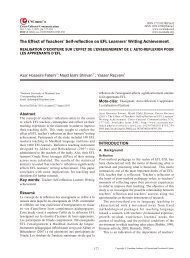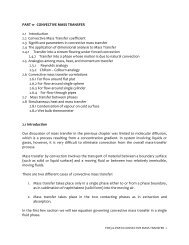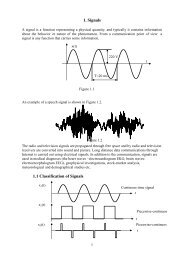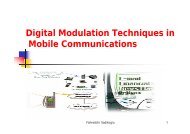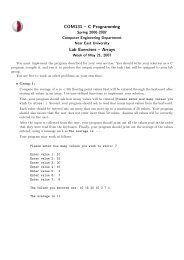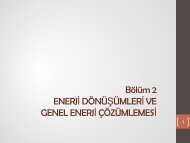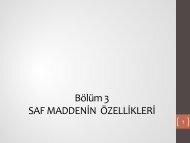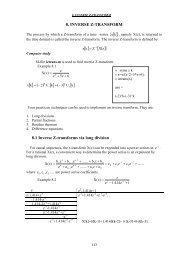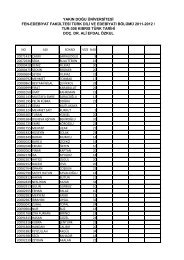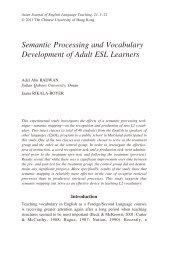2. Time-Domain Representations of LTI Systems
2. Time-Domain Representations of LTI Systems
2. Time-Domain Representations of LTI Systems
Create successful ePaper yourself
Turn your PDF publications into a flip-book with our unique Google optimized e-Paper software.
<strong>2.</strong>11 Characteristics <strong>of</strong> <strong>Systems</strong> Describedby Differential and Difference Equations3. The Impulse ResponseRelation between step response and impulse response1. Continuous-time case : <strong>2.</strong> Discrete-time case :dh n s [ n] s [ n 1]h( t) s( t)dt4. Linearity and <strong>Time</strong> InvarianceForced response LinearityInputx 1x 2x 1 + x 2Forcedresponsey 1(f)y 2(f)y 1(f)+ y 2(f)Initial Cond.I 1I 2I 1 + I 2<strong>Time</strong>-<strong>Domain</strong> <strong>Representations</strong> <strong>of</strong><strong>LTI</strong> <strong>Systems</strong>Natural response LinearityNaturalresponsey 1(n)y 2(n)y 1(n)+ y 2(n)The complete response <strong>of</strong> an <strong>LTI</strong> system is not time invariant.Response due to initial condition will not shift with a time shift<strong>of</strong> the input.76



